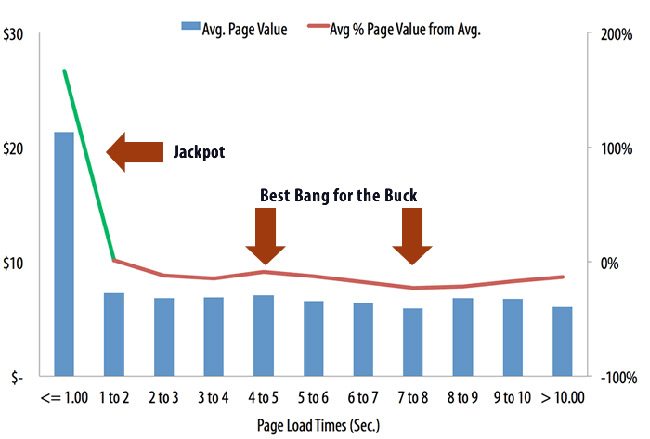Your site speed affects every possible metric you can think of- bounce rate, rankings, conversions, page views and revenue. Sadly, most of the websites run slow with an average load time of 5+ seconds and a standard deviation of 8 seconds. According to a recent study conducted by Portent, a shift from 8 seconds load time to 5 seconds can increase the page value by 18%.
The study analyzed 94 million page views across 16 e-commerce sites in a 90 days period. Except three B2B e-commerce sites, remaining were B2C. For site performance data, 500 e-commerce sites were tested on YSlow and Google PageSpeed. Here’s what the research found out:
- 50% of the websites tested had an average load time of 5+ seconds with a standard deviation of 8 seconds. This means most of the websites are still running slow.
- The biggest page view jump is from 8 seconds to a 5 seconds load time, increasing page views by 18%. The biggest revenue jump is between 2 seconds and 1 second.
- It is good if your entire site loads instantly, but make sure that at least your checkout, login, homepage and category pages load faster.
- Page weight is no longer the biggest factor in site load time. The study revealed that pages of over 4 megabytes had some of the fastest load times.
According to Portent, this is how you can speed up your website:
- JavaScript Timing: Put JavaScript src ‘.js’ towards the end of the page, defer them or load them asynchronously if you don’t care when the script fires.
- ETags and Expires Headers: ETags and Expires Headers reduce the number of requests a browser makes to the server. They tell visiting web browsers which files to update and prevent them from reloading files that scarcely change.
- Image Size: Image size also affects page load time. You can compress them to increase your page speed drastically.





